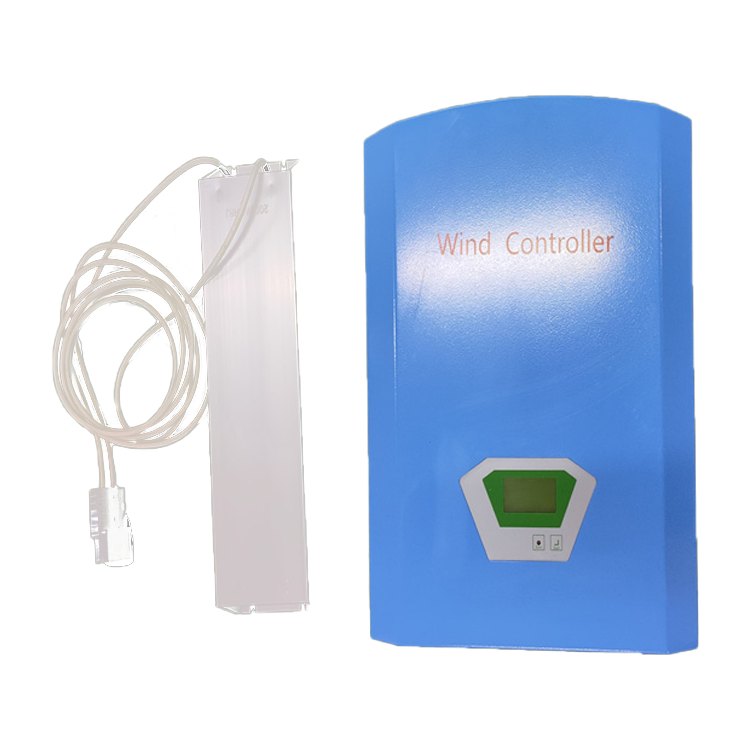Email format error
Email cannot be empty
Email already exists
6-20 characters(letters plus numbers only)
The password is inconsistent
Email format error
Email cannot be empty
Email does not exist
6-20 characters(letters plus numbers only)
The password is inconsistent


The Ultimate Guide to 1000W 48V Controllers: Power Up Your Ride!
In the world of electric vehicles (EVs), the controller is an essential component, acting as the brain that regulates the power and speed of your ride. Among the various types of controllers available, the 1000W 48V controller stands out for its balance of power and efficiency. This blog post delves into the ins and outs of the 1000W 48V controller, explaining its features, benefits, and applications, all while keeping the language simple and engaging.
What is a 1000W 48V Controller?
A 1000W 48V controller is a device used in electric bikes, scooters, and other EVs to manage the power flow from the battery to the motor. The "1000W" denotes the power capacity, meaning it can handle up to 1000 watts of electrical power. The "48V" refers to the voltage it operates on, which is 48 volts. Together, these specifications indicate a controller that's well-suited for medium to high-performance electric vehicles.
Why Choose a 1000W 48V Controller?
Optimal Power Output
One of the primary reasons for choosing a 1000W 48V controller is its optimal power output. With 1000 watts of power, your EV can achieve higher speeds and better acceleration compared to lower-wattage controllers. This makes it ideal for those who need a bit more oomph, whether for commuting, leisure rides, or off-road adventures.
Efficient Energy Use
The 48V system is known for its efficiency. Higher voltage systems, like the 48V, reduce the current required for the same power output, which minimizes energy loss due to resistance in the wires. This means you get more mileage from your battery, making your rides longer and more enjoyable.
Versatility
A 1000W 48V controller is versatile and can be used in a variety of EVs, including e-bikes, e-scooters, and even small electric cars. This versatility makes it a popular choice among DIY enthusiasts and EV builders.
Key Features of a 1000W 48V Controller
Robust Build
Most 1000W 48V controllers are built to last, featuring sturdy casings that protect the internal components from dust, moisture, and physical damage. This durability ensures that the controller can withstand the rigors of everyday use.
Smooth Acceleration
Thanks to advanced algorithms, these controllers provide smooth acceleration and deceleration, enhancing the overall riding experience. This is particularly important for maintaining control and safety, especially at higher speeds.
Regenerative Braking
Many 1000W 48V controllers come with regenerative braking capabilities. This feature allows the controller to convert some of the kinetic energy back into electrical energy during braking, which recharges the battery and extends the range of your EV.
User-Friendly Interface
Modern controllers often include a user-friendly interface that allows riders to customize settings such as speed limits, acceleration curves, and braking intensity. This customization ensures that the EV can be tailored to individual preferences and riding conditions.

Applications of 1000W 48V Controllers
Electric Bikes
For e-bike enthusiasts, a 1000W 48V controller provides a significant boost in power and performance. Whether you’re commuting to work or exploring off-road trails, the enhanced power output and efficiency make your rides faster and more enjoyable.
Electric Scooters
In the realm of electric scooters, a 1000W 48V controller can transform your ride. With better speed and acceleration, navigating through city streets becomes a breeze. Plus, the regenerative braking feature adds an extra layer of efficiency, making stop-and-go traffic less of a hassle.
DIY Electric Vehicles
For those who love building their own EVs, a 1000W 48V controller is a versatile and reliable choice. Its robust build and customizable settings make it perfect for a wide range of DIY projects, from electric go-karts to small electric cars.
Tips for Choosing the Right 1000W 48V Controller
Compatibility
Ensure that the controller is compatible with your motor and battery. Check the voltage and power ratings to match them appropriately.
Features
Consider the features you need. If you require regenerative braking or a customizable interface, make sure the controller you choose offers these options.
Brand Reputation
Opt for controllers from reputable brands. Quality controllers from trusted manufacturers tend to offer better performance, durability, and support.
Reviews and Recommendations
Read reviews and seek recommendations from other EV enthusiasts. Real-world experiences can provide valuable insights into the performance and reliability of different controllers.
Installation and Maintenance of a 1000W 48V Controller
Installation Tips
Installing a 1000W 48V controller can seem daunting, but with the right approach, it’s a manageable task. Here’s a step-by-step guide to help you through the process:
Gather Tools and Materials: You’ll need basic tools such as screwdrivers, wrenches, and wire connectors. Make sure you have the correct connectors and wiring compatible with your motor and battery.
Disconnect the Battery: For safety, always disconnect the battery before starting any installation. This prevents accidental short circuits and potential damage.
Mount the Controller: Choose a secure location to mount the controller, ideally in a spot protected from the elements. Many controllers come with mounting brackets or straps for easy installation.
Connect Wires: Follow the wiring diagram provided with your controller. Connect the wires from the motor to the controller and then connect the controller to the battery. Ensure all connections are secure and properly insulated.
Check Connections: Double-check all connections before reconnecting the battery. Loose or incorrect wiring can lead to performance issues or damage.
Reconnect the Battery: Once you’re confident everything is properly connected, reconnect the battery. Power up the system and test the controller to ensure everything is functioning correctly.
Maintenance Tips
Maintaining your 1000W 48V controller is crucial for ensuring long-term performance and reliability. Here are some maintenance tips to keep your controller in top shape:
Regular Inspections: Periodically check the controller for any signs of damage or wear. Look for loose wires, corrosion, or physical damage to the casing.
Clean the Controller: Keep the controller clean and free from dust and debris. Use a soft, dry cloth to wipe down the exterior. Avoid using water or harsh chemicals.
Check Connections: Regularly inspect the wiring connections for signs of wear or loosening. Tighten any loose connections and replace damaged wires as needed.
Monitor Performance: Pay attention to the performance of your EV. If you notice any issues such as erratic behavior, reduced speed, or unusual noises, it may indicate a problem with the controller.
Keep the Controller Dry: Avoid exposing the controller to excessive moisture. If you ride in wet conditions, ensure the controller is properly sealed and protected.
Troubleshooting Common Issues
Even with regular maintenance, you might encounter some issues with your 1000W 48V controller. Here’s a guide to help you troubleshoot common problems:
Controller Not Powering On
- Check the Battery: Ensure the battery is fully charged and properly connected.
- Inspect Connections: Verify that all wiring connections are secure and correctly aligned.
- Examine the Controller: Look for any visible damage or signs of malfunction.
Erratic or Unresponsive Behavior
- Test the Throttle: Make sure the throttle is functioning correctly. Sometimes issues with the throttle can affect controller performance.
- Inspect Wiring: Check for any loose or damaged wires that might be causing erratic behavior.
- Reset the Controller: Some controllers have a reset function. Consult the user manual for instructions on how to reset the controller.
Reduced Speed or Power
- Check Battery Voltage: Ensure the battery voltage is within the recommended range for your controller.
- Inspect the Motor: A problem with the motor can affect performance. Check for any issues with the motor connections or components.
- Verify Controller Settings: If your controller has adjustable settings, ensure they are correctly configured for optimal performance.
Conclusion
A 1000W 48V controller is a fantastic choice for anyone looking to enhance the performance and efficiency of their electric vehicle. With its optimal power output, efficient energy use, and versatile applications, it’s no wonder this controller is a favorite among EV enthusiasts. Whether you’re riding an electric bike, zipping around on a scooter, or building your own EV, the 1000W 48V controller has the features and reliability to power up your ride. So, take the plunge and experience the difference a high-quality controller can make!

